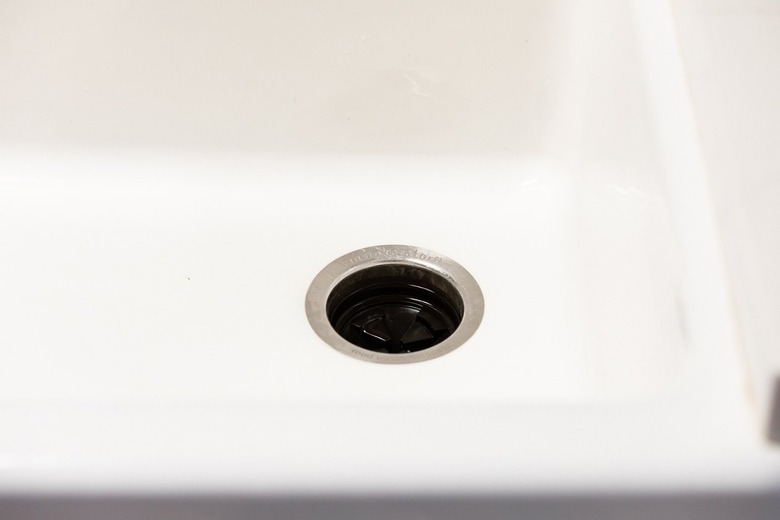What Is A Good Sealant For Sink Drains?
We may receive a commission on purchases made from links.
You must seal the area between a sink's drain body and the actual sink surface — otherwise, water will leak out between the two and begin dripping under the sink. Plumber's putty is the most popular sealant for sink drains. However, some pros lean toward a more modern waterproof material called silicone caulk.
Most Popular: Plumber’s Putty
Most Popular: Plumber's Putty
Plumber's putty comes in containers ranging from small to large tubs, which you may choose from depending on how much plumbing installation work you are doing. Plumber's putty literally is a putty, similar to the clay you may have played with as a child. You can form the putty into a variety of shapes, just like clay. And like clay, the putty dries and hardens after it is out of its container long enough.
A seal made with plumber's putty may fail down the road if the putty becomes brittle and it cracks apart, allowing water to pass through the seal.
How to Use Plumber's Putty
How to Use Plumber's Putty
When you are installing a sink drain and decide to use plumber's putty, here's what to do:
- Roll the putty between the palms of your hands until the putty becomes a long rope.
- Wrap the rope around the drain opening.
- Tear off any of the rope that overlaps the rest.
- Place the drain body on top of the putty.
- Wipe away any putty that squished out from between the drain body and the sink itself before it hardens.
- Tighten the bottom of the drain body.
Alternative: Silicone Caulk
Alternative: Silicone Caulk
Silicone caulk comes in a tube, with some allowing you to squeeze the caulk out by hand while others require the use of a caulk gun. Silicone caulk is a clear substance and it is fairly fluid when it first comes out of the tube. After about an hour of exposure to the air, the caulk begins to form a skin. Once the silicone caulk fully cures, it becomes hard but not to the point of becoming brittle.
Because silicone caulk does not become waterproof until it fully cures, it's not the number one choice for sealing a sink drain. If you do choose to use caulk, take care to purchase 100% silicone caulk, not acrylic, latex, polyblend, or sanded varieties, which are not up to the task of coming into constant contact with water. Like plumber's putty, silicone caulk won't last forever and will eventually break down and require replacement.
How to Use Silicone Caulk
How to Use Silicone Caulk
With silicone caulk, you must apply an even amount either to the underside of the sink's drain assembly and to the sink immediately around the drain hole opening. Like the plumber's putty, some silicone caulk may squeeze out from between the drain body and the sink, which you must wipe off before it hardens. To remove hardened silicone caulk, you must purchase a caulk softener solution at a hardware or home improvement store.
